Sago porridge is sure to become a favorite. This dreamy porridge made from sago pearls boiled with warm spices and sweetened with milk and sugar is the perfect comforting breakfast meal to jump-start your morning.
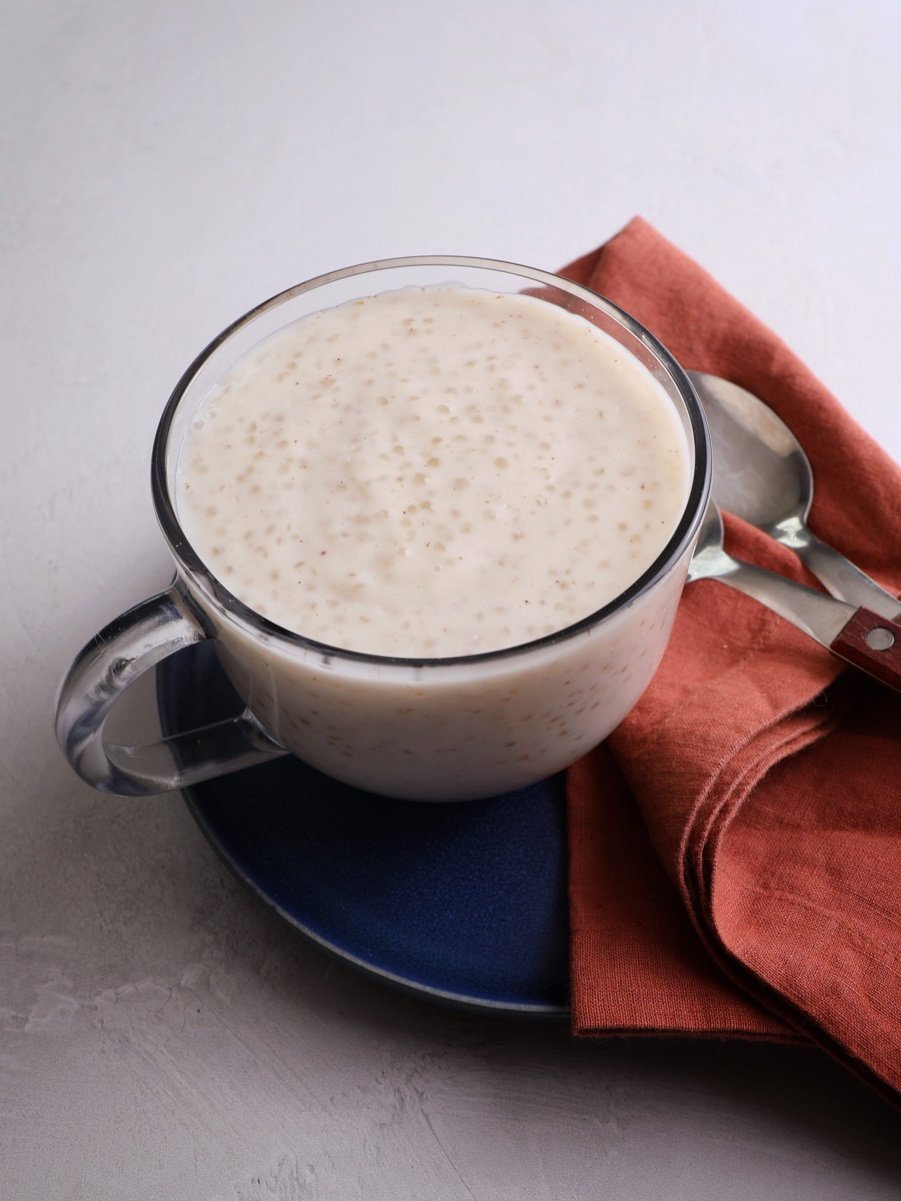
Guyanese Sago Porridge
Sago Porridge is one of my all-time favorite porridges. (Cornmeal porridge comes in a close second.) I always thought sago would be hard to find in the US, until a friend shared that Indians call this sabudana and it is readily available in Indian markets or grocery stores like Patel Brothers. Once I got my hand on a bag of sago, I couldn’t wait to whip up some porridge.
It is important to note that some sabudanas are made from tapioca and are not the same as sago. You can get sago pearls from amazon by clicking this affiliate link.
Why You’ll Love This Sago Porridge Recipe
- Quick & Easy: Skip boring oatmeal or cereal and opt for this delicious Guyanese porridge instead. It takes just 20 minutes to make with just a handful of ingredients.
- Versatile: Eat it by the spoonful in a bowl or slurp it down in a cup. Enjoy it sweet or unsweetened, with or without toppings, there are so many ways to enjoy sago porridge. Have fun figuring out what you like best!
- Healthy: Although this recipe contains sweetener options, sago porridge is a wholesome meal that’s good for you. Sago pearls are great for people struggling with digestion issues, as they aid with digestion and provide a boost of energy.
What is sago?
Sago is an edible starch made from the pith of the sago palm (a tropical palm tree). It it processed into flour, meal, or pearl sago. The pearls look a lot like tapioca pearls but unlike tapioca, it is not made from cassava starch.
Sago is ideal for sweet porridge but it also works for drinks, pudding, and savory recipes.
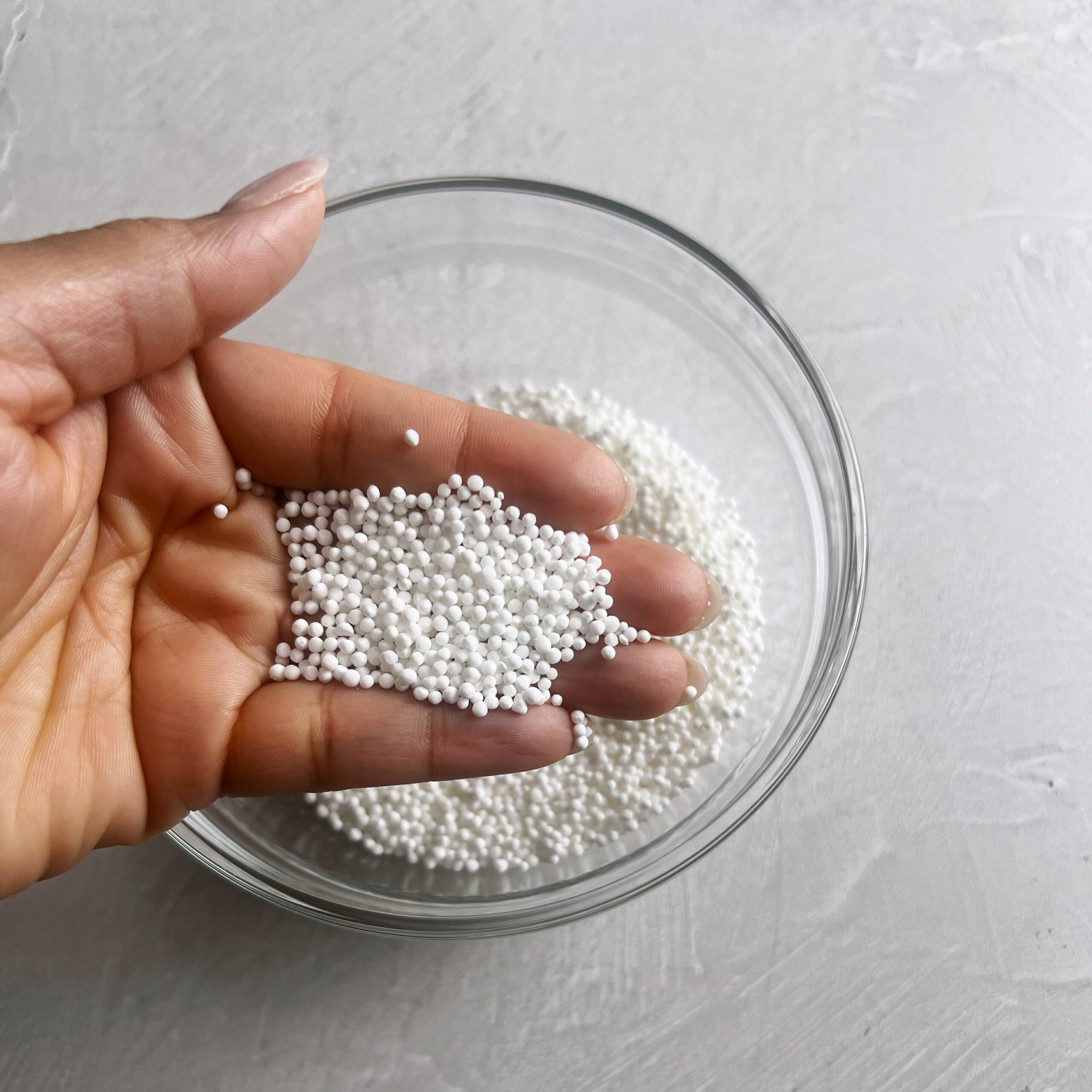
Ingredients for Sago Porridge
Once you secure your sago pearls the rest of the ingredients are simple pantry staples.
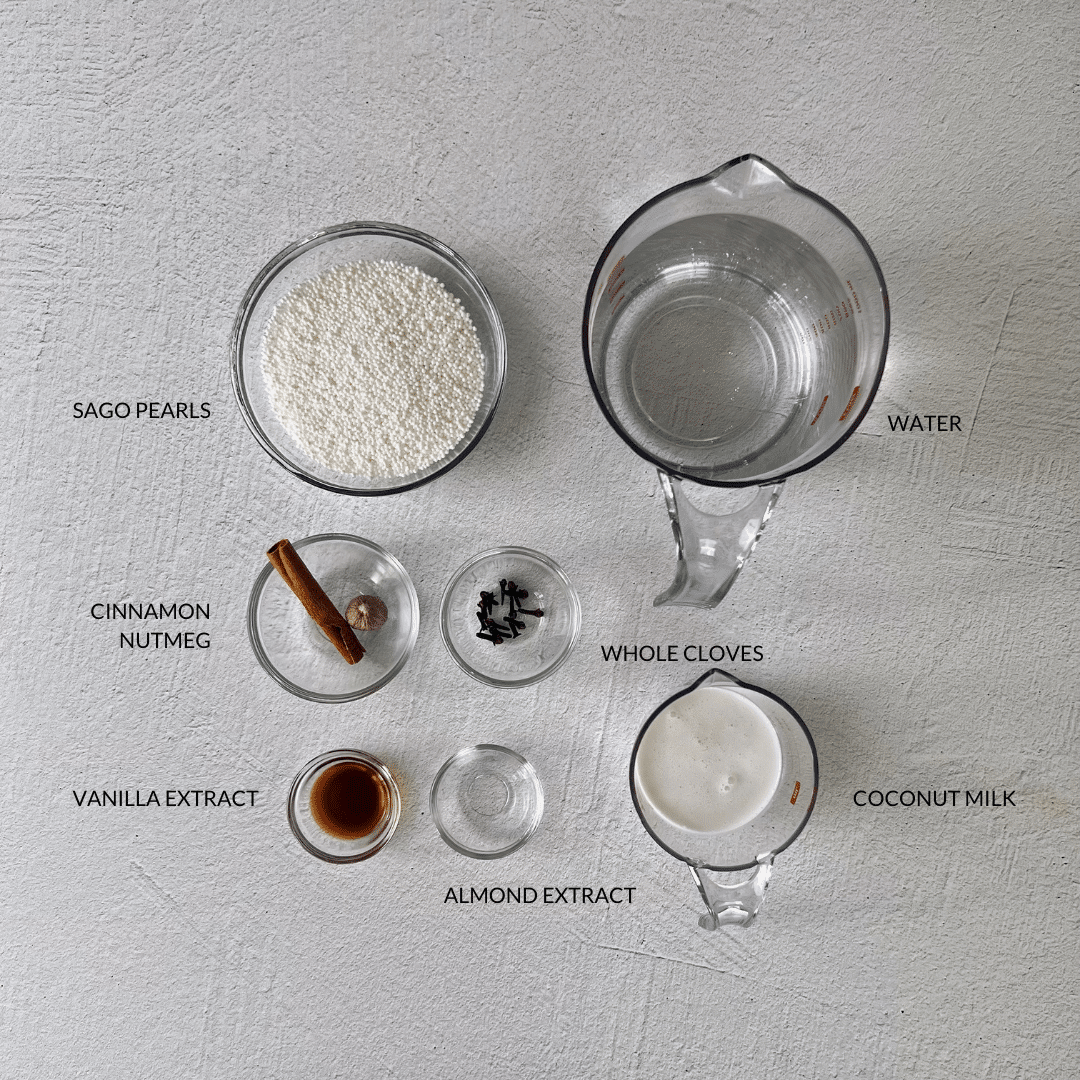
- Sago Pearls: They have a neutral taste so they’ll suit whatever ingredients you add.
- Water: The liquid base of the porridge.
- Spices: I use a medley of cinnamon sticks, whole cloves, cardamom pods, and freshly grated nutmeg.
- Flavoring: Vanilla essence or extract imparts flavor. Add almond essence or extract as an optional ingredient. (If you like a nutty taste, definitely add it!)
- Coconut milk or milk of your choice: I use coconut milk to keep my porridge dairy free but you can use any milk you like
- Brown Sugar (or sweetener of your choice): I love adding maple syrup or honey or blending dates into my milk, to keep this porridge refined sugar free and paleo.
See recipe card for quantities.
Spices for Sago Porridge
I typically add the same combination of spices to my porridges: cinnamon, cloves, nutmeg and sometimes cardamom. I don’t deviate much from this because I want my porridge to have a familiar taste that I link to porridges from my childhood. Using whole or ground spices is simply a matter of preference.
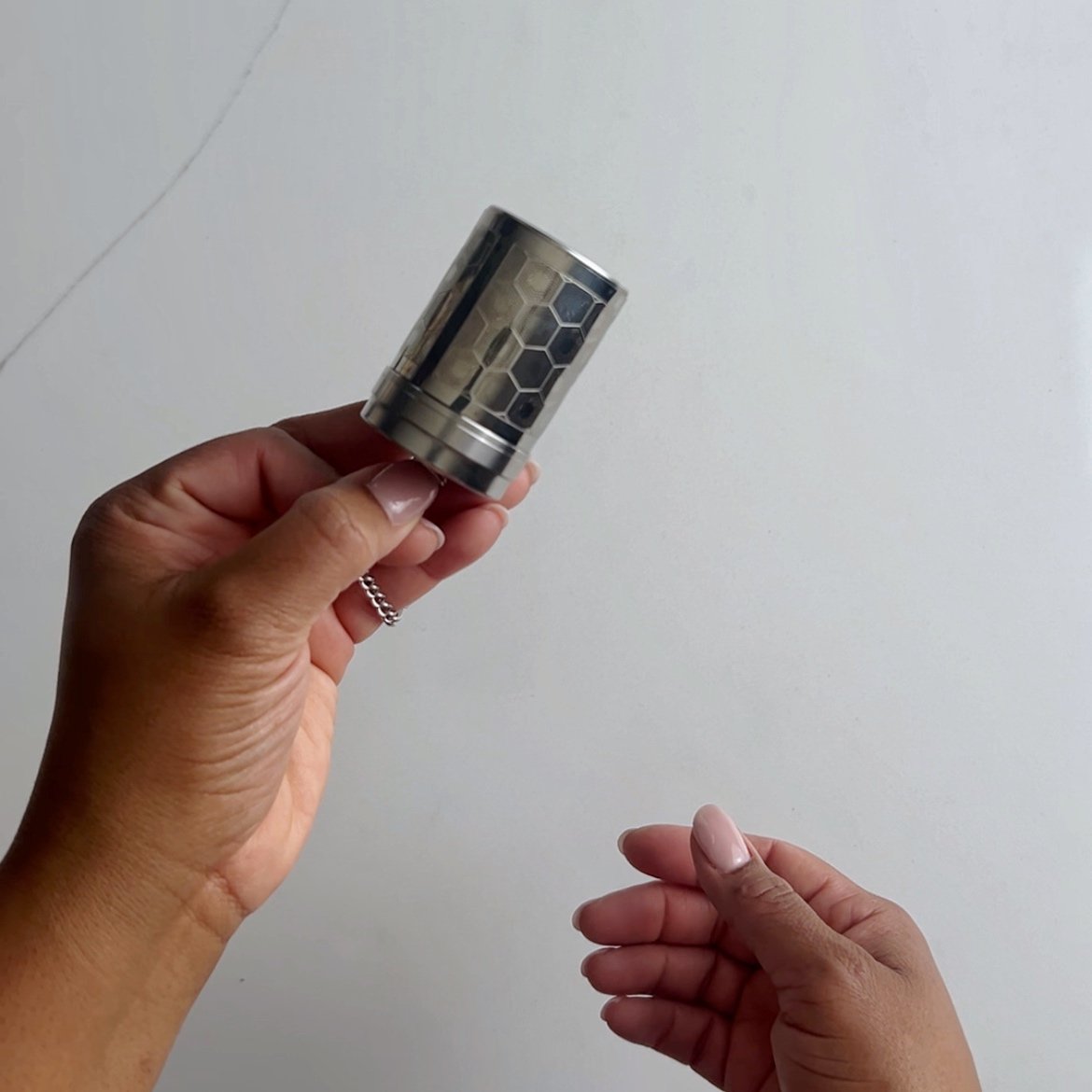
To make it easier to remove whole spices from the finished porridge, you may simply place the spices in a muslin cloth and tie into a knot, then fish the spice bundle out once you’re done making the porridge. Or you can use a tea infuser like this one pictured above.
How to Make Sago Porridge
Rinse and soak sago
I always give my sago a quick rinse to remove excess starch and then let it soak, in just enough water to cover. The longer you let the pearls soak the quicker they will boil to the translucent texture we need for this recipe.I recommend a minimum of 30 minutes and overnight if time allows.

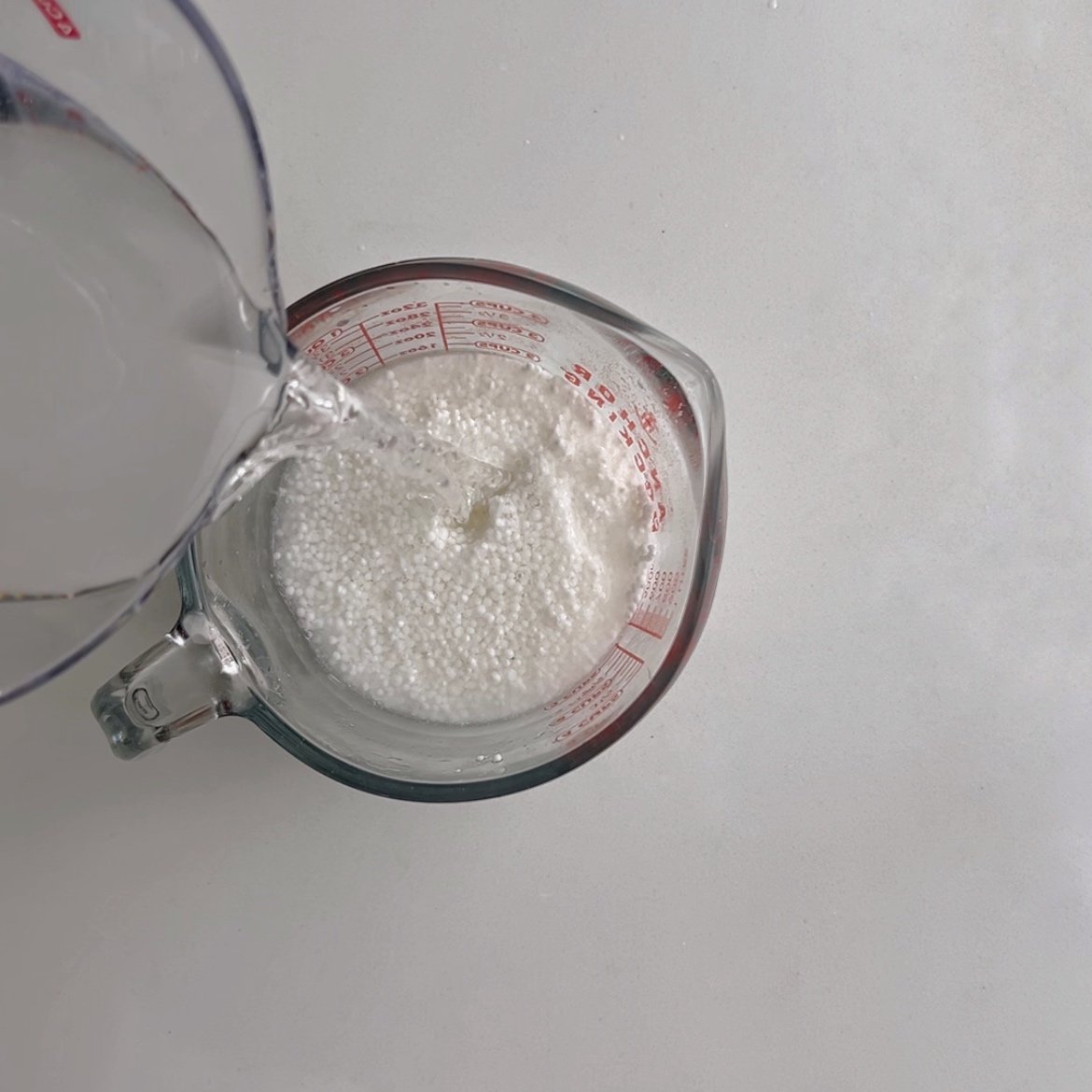
Cook the Sago
Add water and spices (cinnamon, cloves, cardamom) to a medium sized saucepan on high heat and bring up to a roaring boil. Boil for about 5 minutes (or longer if you want a stronger spiced flavor). Then stir in the soaked sago pearls.
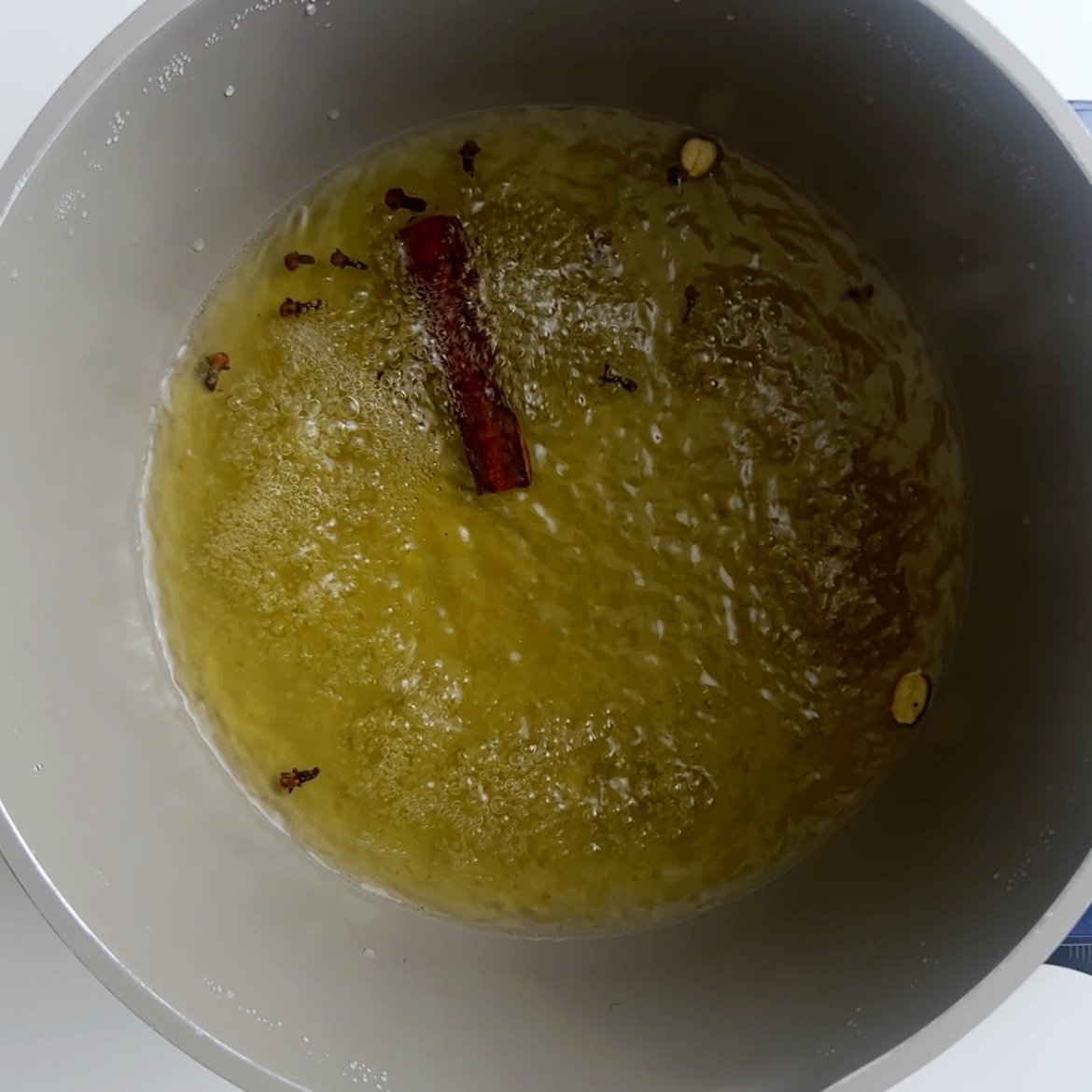
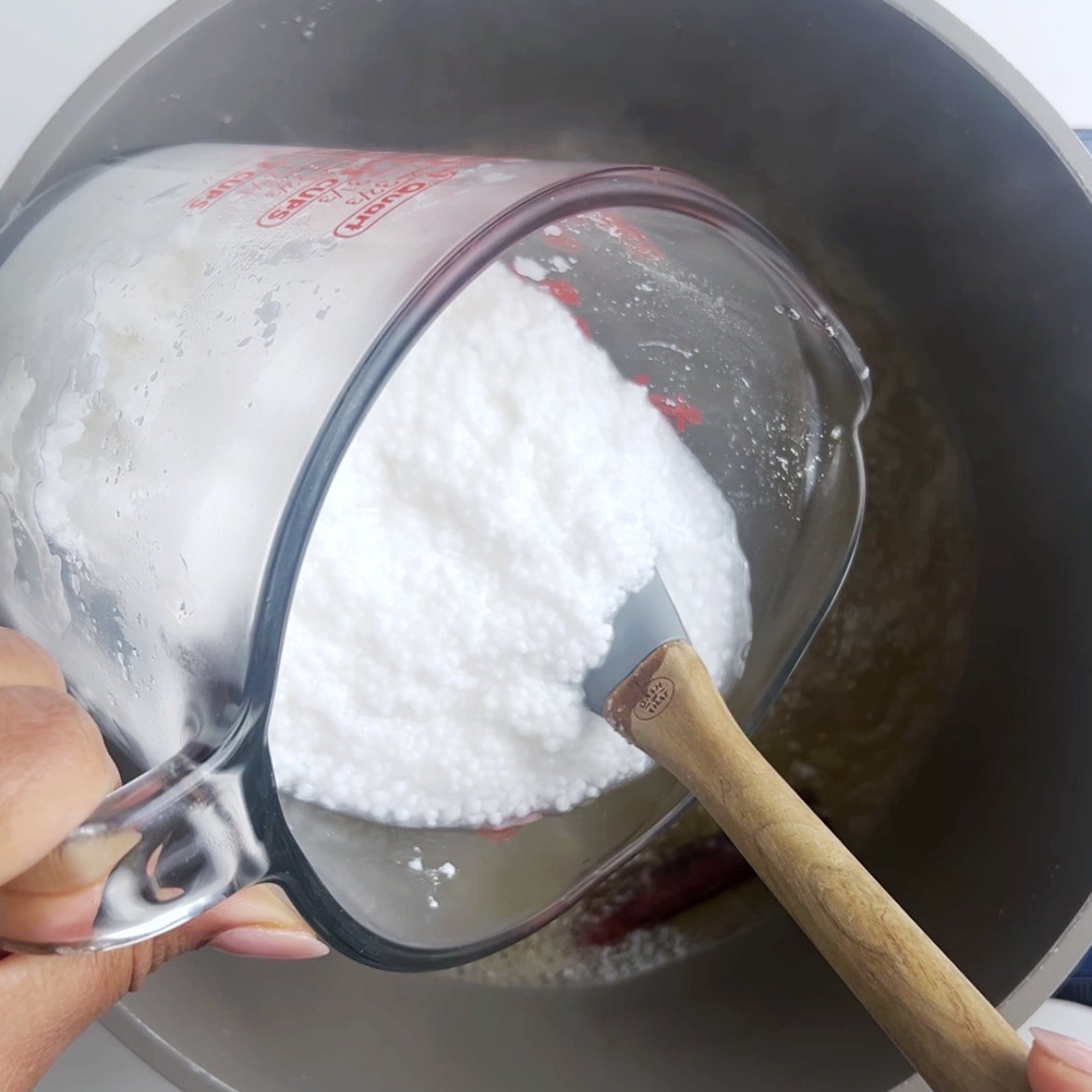
Reduce the heat to medium, and continue to boil, stirring non-stop, until the pearls are completely translucent. This will take just a few minutes.
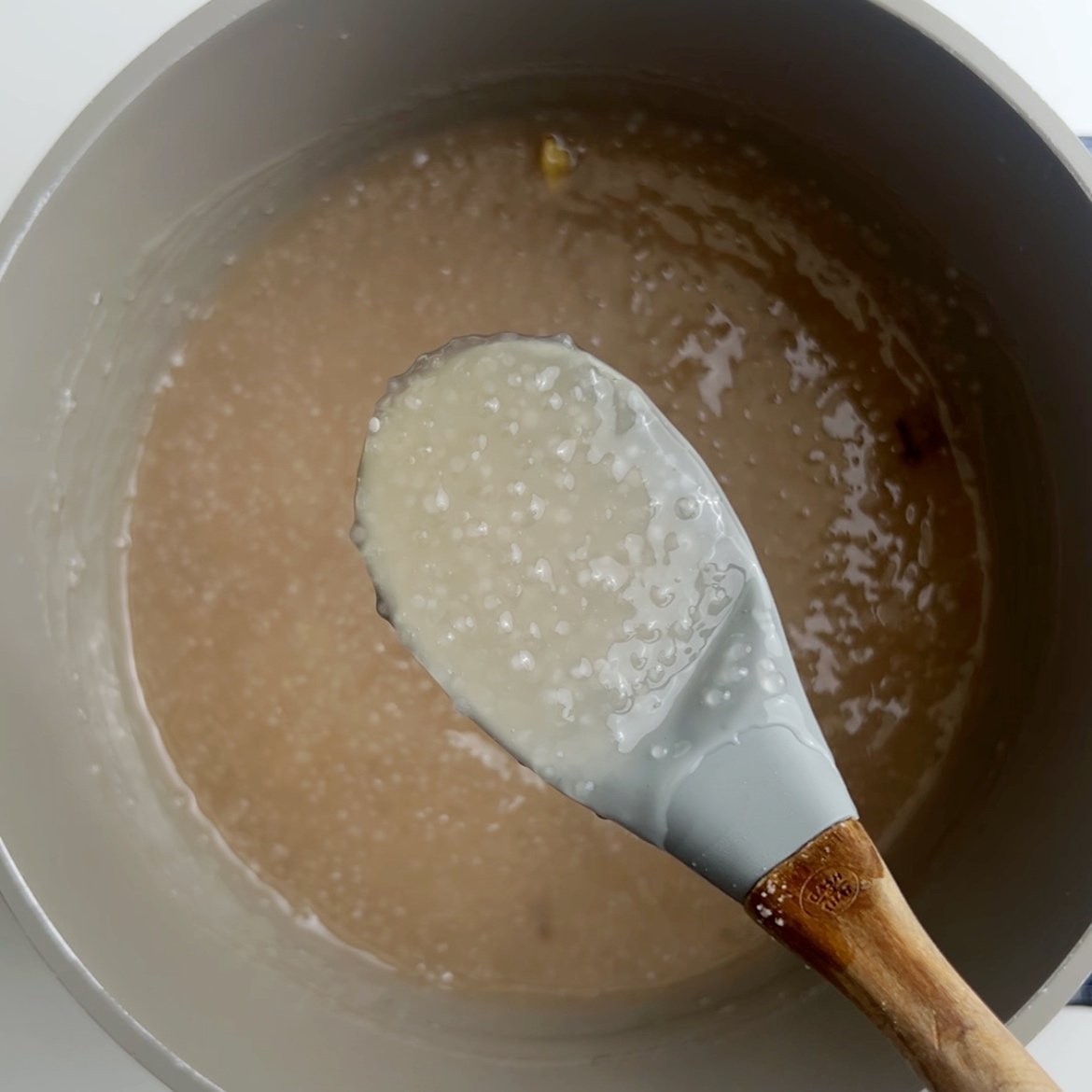
Then add your milk of choice, I used coconut milk, vanilla extract, almond extract, grated nutmeg and sweetener of choice.
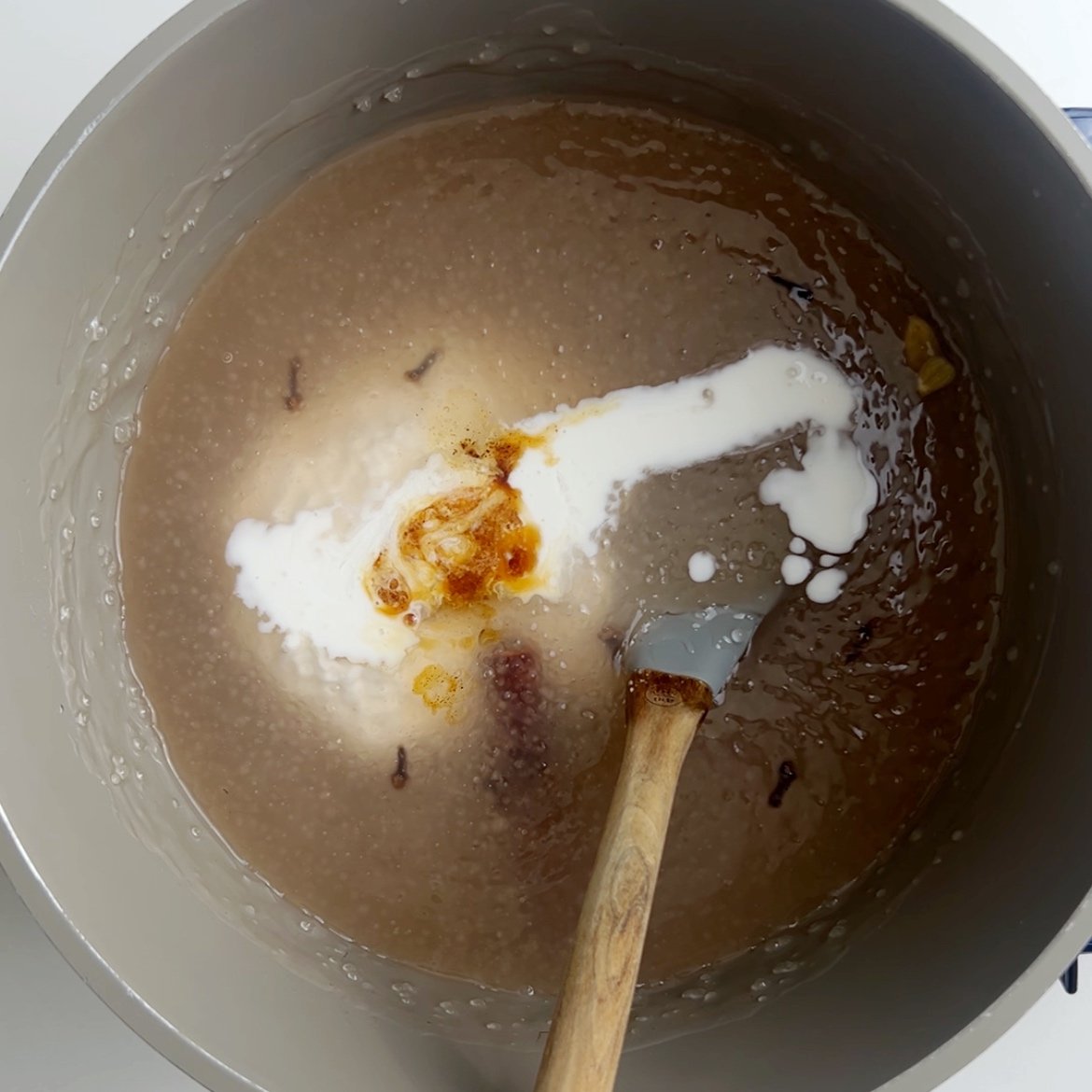
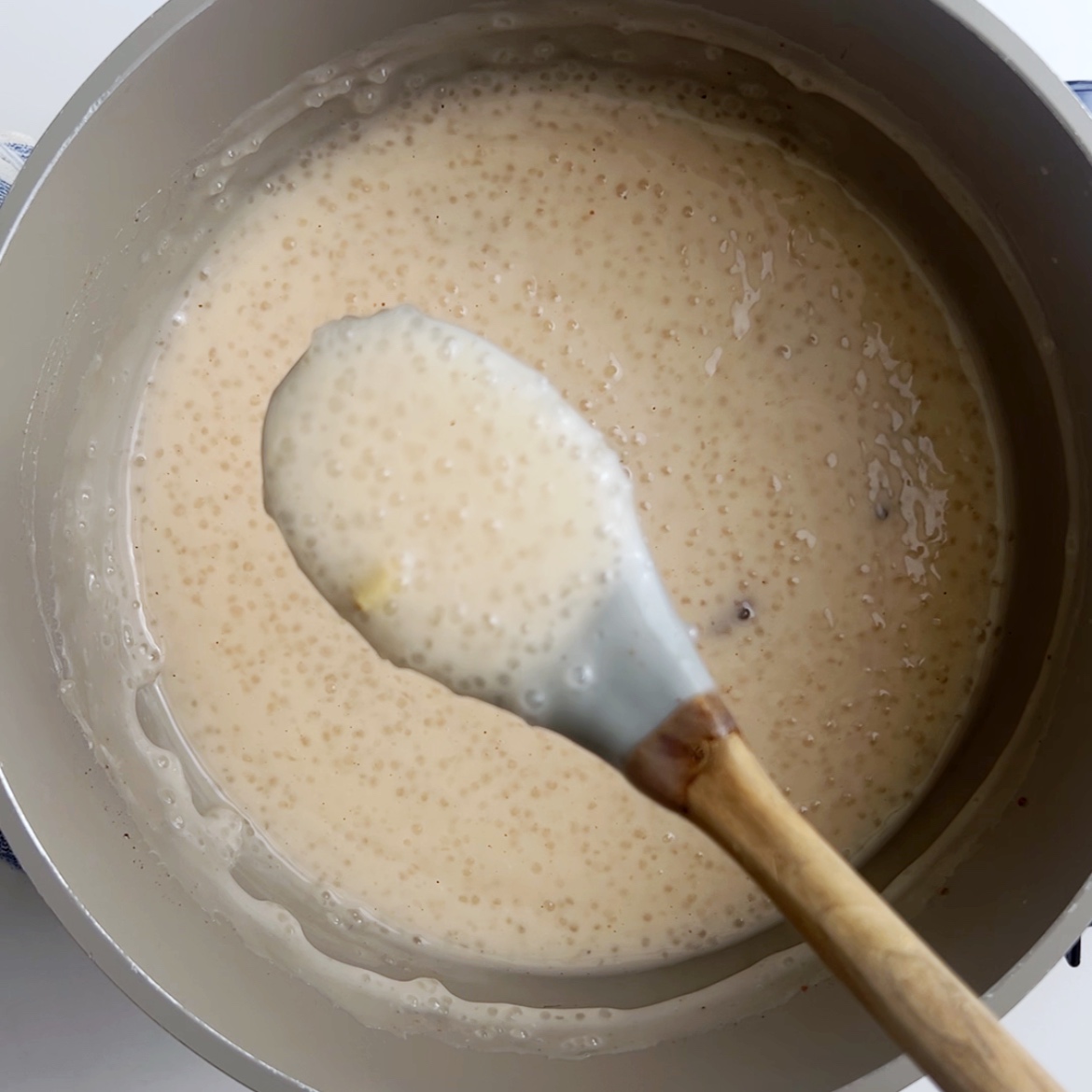
Sweetening your Sago Porridge
As a child, my parents sweetened our porridges with powdered full cream milk or evaporated milk and brown sugar, or condensed milk, when they had it. In my quest to choose more dairy-free options I sweeten my porridge with coconut milk and sweetened condensed coconut milk or to keep it completely refined sugar free I use maple syrup or honey instead of the sweetened coconut condensed milk.
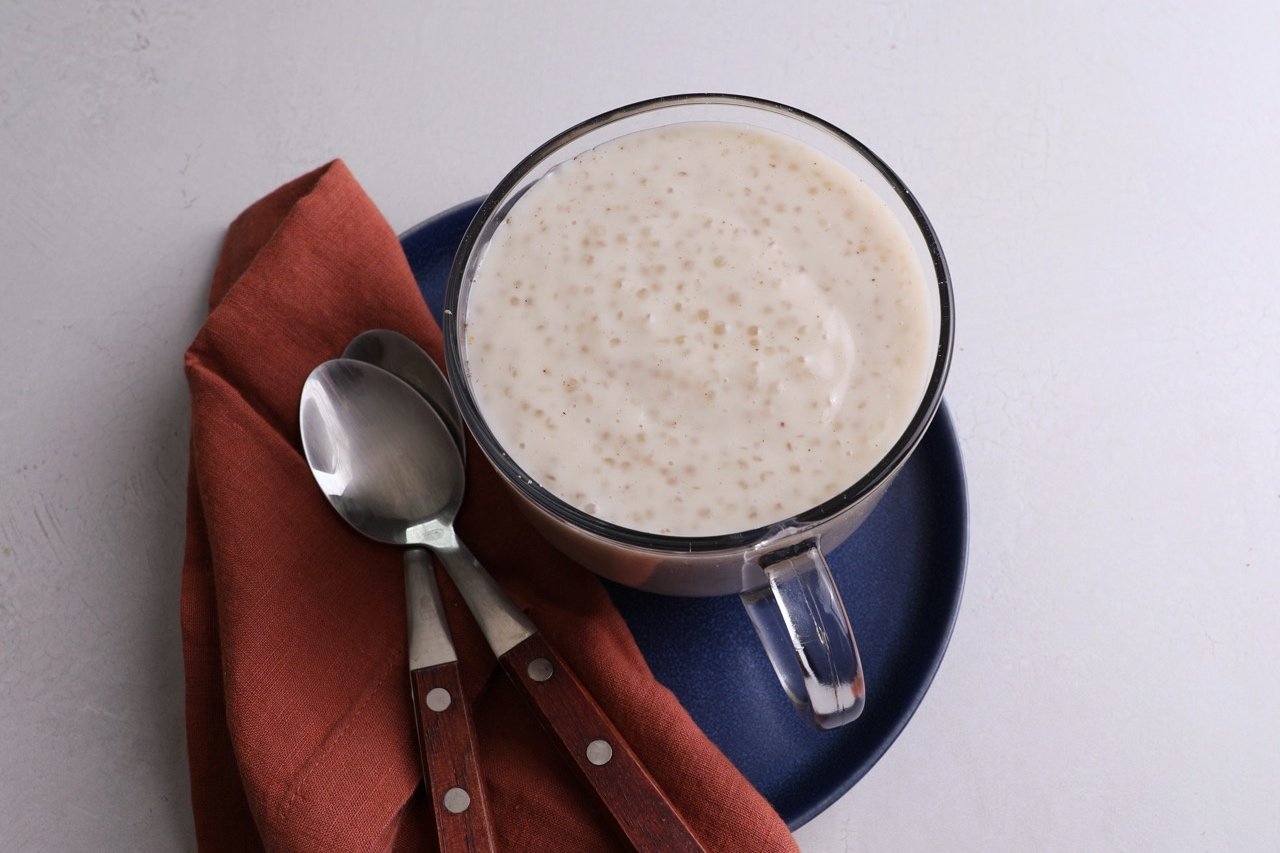
Storage
This porridge is best enjoyed immediately but you can store it in an an airtight container in the fridge for up to 3 days. To reheat, stir over low heat on the stovetop. You may need to add a splash of water or milk to loosen the consistency.
Tips for the Best Sago Porridge
- Rinse the sago pearls thoroughly under cold water to remove excess starch. This helps prevent the pearls from becoming too sticky or clumping together during cooking.
- Soak the sago pearls: Soak the pearls for at least 30 minutes before cooking. This reduces the cooking time for it to become translucent.
- Keep stirring the sago porridge while it cooks. This ensures that it doesn’t stick to the bottom of the pot and burn.
- Reduce the heat once you add the sago pearls. Vigorous boiling can cause the sago to break apart or become overly sticky.
- The porridge is done when the sago pearls are transparent. This ensures they are fully cooked. Undercooked sago is tough so definitely be patient with this step.
- The porridge thickens as it cools.
Recipe Variations
- Spices: Add ginger for some extra zing.
- Fruits: Add fresh or dried fruits to the porridge for natural sweetness and more texture. Try diced apples, blueberries, pitted cherries, dried cranberries, or raisins.
- Nuts: Add slivered almonds, toasted coconut, or chopped pecans.
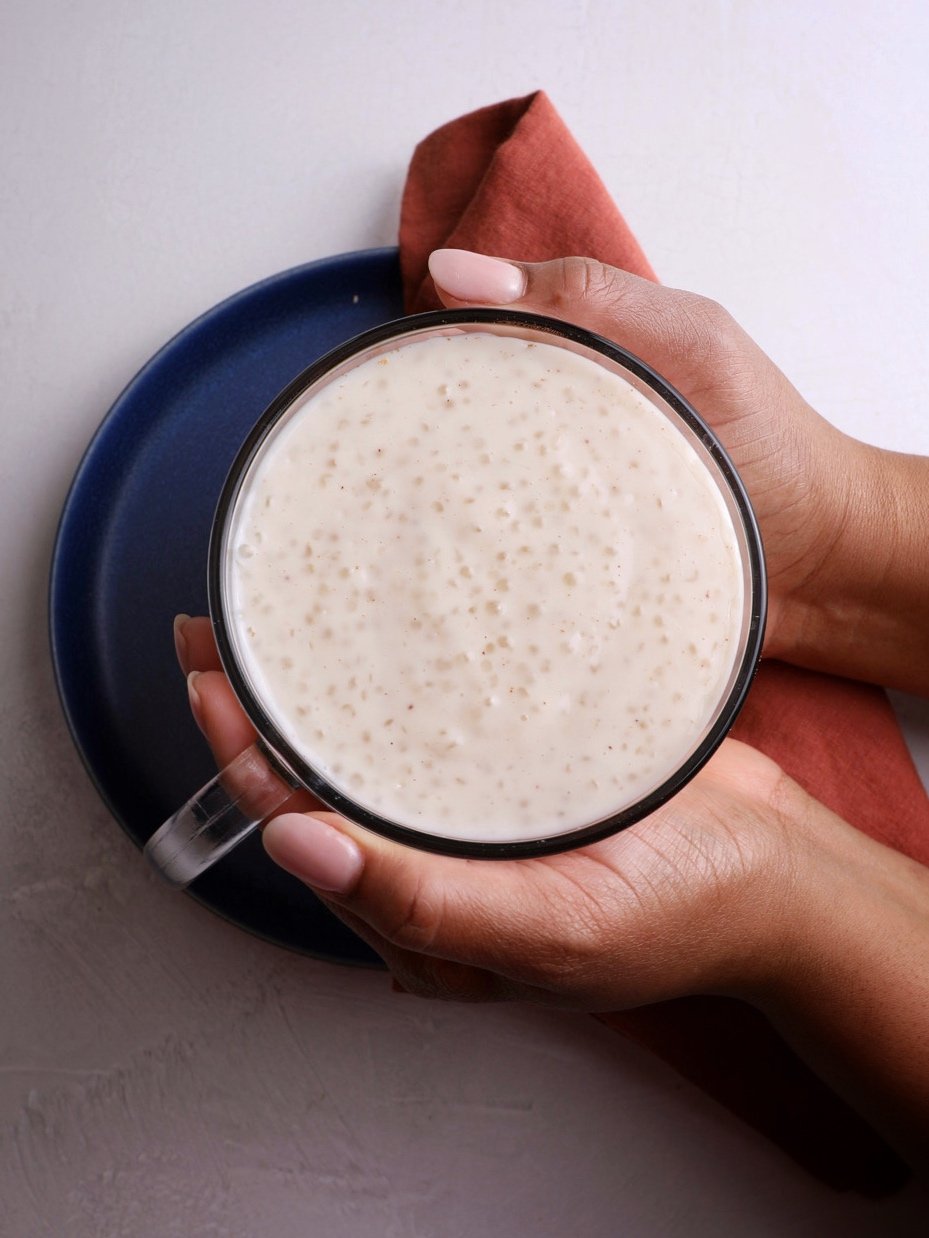
Frequently Asked Questions
Sago has a neutral taste so it will take on the flavor of whatever ingredients it is combined with. When cooked, they are soft, chewy, and gelatinous.
Make sago porridge with sago pearls, water, and your spices and sweeteners of choice. Add coconut milk for creaminess.
Sago is derived from the pith of various types of palm trees, while tapioca comes from the cassava root. Although they have a similar appearance, there are subtle differences in taste and texture when cooked.
Sago is a good source of carbs, which provide energy. It’s also good for stomach aches and indigestion because it contains resistant starch, a variety that easily passes though the digestivebtract and provides the gut with healthy bacteria. Adding ingredients such as coconut milk and sweeteners can contribute to the overall calorie content, so be mindful.


Sago Porridge
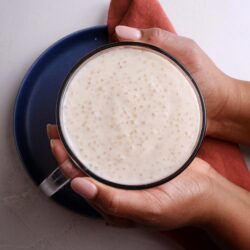
Equipment
- Medium sized sauce pan
Ingredients
- 1 cup Sago Pearls
- 4 cups water
- 1 cinnamon stick
- 5 whole cloves
- 2 cardamom pods
- 1 teaspoon nutmeg freshly grated
- 1 teaspoon vanilla extract
- 1 teaspoon almond extract
- 1 cup coconut milk or milk of choice
- 1/2 cup Brown sugar or other sweeteners
Instructions
- Rinse the sago pearls in cool water, then soak in just enough water to cover the pearls and set aside. Allow to soak for at least 30 minutes cooking.
- When ready to cook, add water and spices (cinnamon, cloves, cardamom) to a medium sized saucepan on high heat and bring up to a boil. Boil for about 5 minutes (or longer if you want a stronger spiced flavor).
- Then stir in the soaked sago pearls, reduce the heat to medium and continue to cook, continuously, until the pearls are completely translucent (2-3 minutes)
- Next add your milk of choice, the grated nutmeg, vanilla extract, almond extract and brown sugar or sweetener of choice and mix together well.
- Serve Hot
Notes
Nutrition
The information listed in the recipe card is an estimate provided by an online nutrition tool. The tool evaluates ingredient names and amounts then makes calculations based on the number of servings listed for the recipe. It is provided as a general guideline and not as a precise calculation. For precise nutrition information please feel free to add the ingredients to your preferred nutrition calculator or consult a doctor or licensed nutritionist.


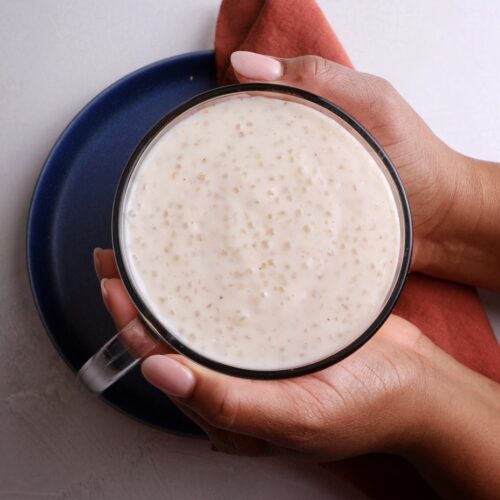
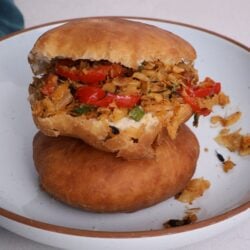 Soft & Fluffy Bake and Saltfish
Soft & Fluffy Bake and Saltfish Guyanese Soft Bakes
Guyanese Soft Bakes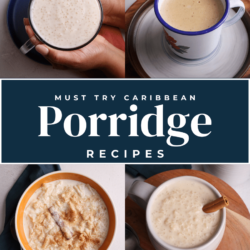 Must Try Caribbean Porridge Recipes
Must Try Caribbean Porridge Recipes Flour Porridge
Flour Porridge
Christine Says
I absolutely love this recipe! Is it possible for me to make a big batch to last for a week or so? If so, can you guide me on how to store it?
Emma Says
I’m not usually a porridge lover but this is amazing! Such delicious flavours and the sago is perfect!
Althea Brown Says
So glad you enjoyed this.
Monuca Says
Thank you for the tip about finding real sago pearls in Indian food markets — I can’t wait to try this. I’m curious — I saw a video showing the difference ( https://hot-thai-kitchen.com/real-sago/ ) and the host stated that she thought real sago pearls had a lot more taste than tapioca pearls — have you had both? If so, would you agree and do you prefer the sago pearls?
Althea Brown Says
I do prefer real sago pearls. I can’t explain the difference in the taste but it is there. Hope this helps.